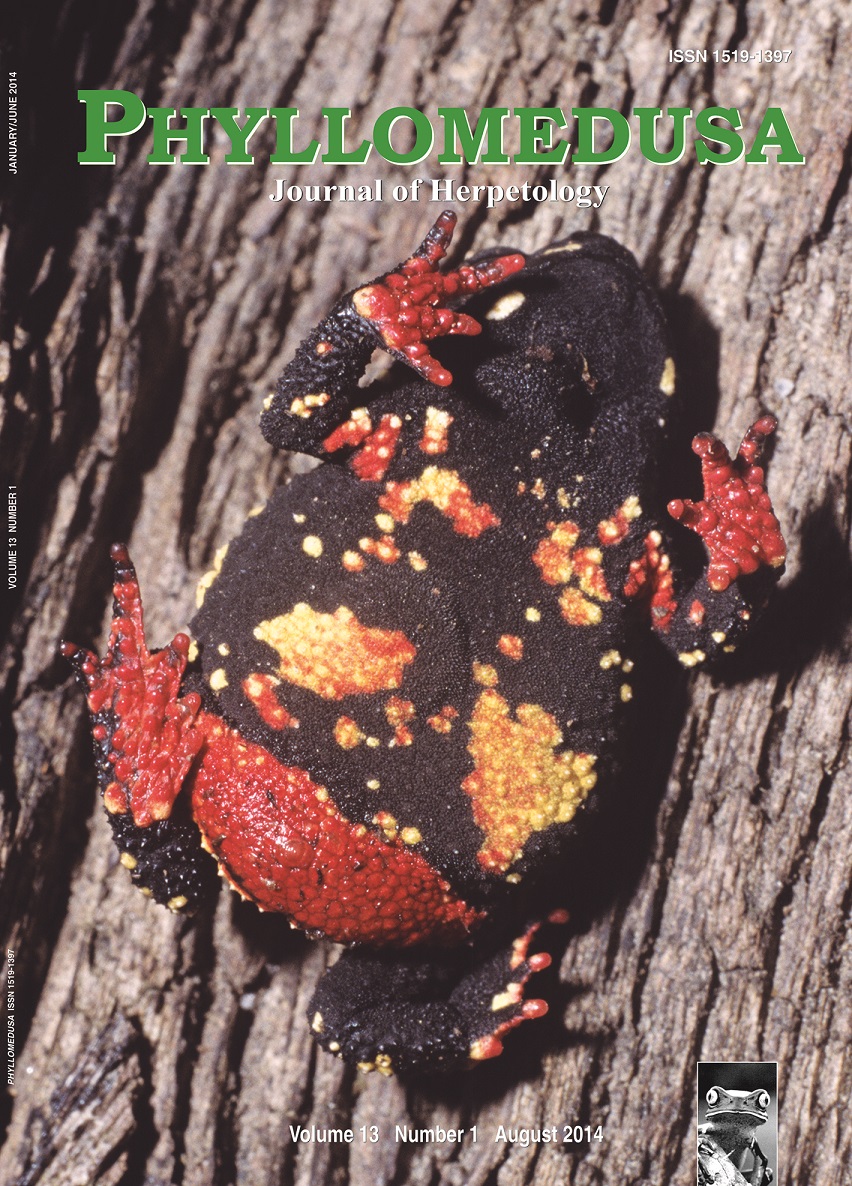Validity of photo-identification technique to analyze natural markings in Melanophryniscus montevidensis (Anura: Bufonidae)
DOI:
https://doi.org/10.11606/issn.2316-9079.v13i1p59-66Keywords:
amphibians, individual identification, non-invasive technique, Uruguay.Abstract
Individual identification is useful for answering a variety of biological questions about animal life histories. Most of the techniques used to mark amphibians are invasive and can cause negative effects, compromising individual survivorship and biasing studies. Photo-identification consists in the identification of specimens based on photographic records of unique color-design patterns. This technique has been used with success in several amphibian species. Melanophryniscus montevidensis is an endangered anuran species inhabiting the Uruguayan Atlantic coast. The general pattern of coloration is black with red and yellow blotches on the belly. In this study, we validated the technique of photo-identification assisted by software for individual recognition in M. montevidensis using natural markings. Field trips were performed over 16 months during which, the ventral color pattern of specimens was photographed. The photos were edited and analyzed with the Wild-ID 1.0 software for photographic reconnaissance. An efficiency of 100% was obtained in the visual recognition and 90% in the detection of recaptures using the software. The use of photo-identification using natural marks is an effective technique in this species, because the color pattern of the belly was highly variable among individuals and remained unchanged in individuals over the 16 month period. In this evaluation the use of software for photo-identification was necessary for the treatment of large databases.Downloads
Download data is not yet available.
Downloads
Published
2014-08-30
Issue
Section
Articles
License
All material originally published in Phyllomedusa belongs to Escola Superior de Agricultura Luiz de Queiroz - Universidade de São Paulo. All contents are under a license of Creative Commons BY-NC-ND.How to Cite
Elgue, E., Pereira, G., Achaval-Coppes, F., & Maneyro, R. (2014). Validity of photo-identification technique to analyze natural markings in Melanophryniscus montevidensis (Anura: Bufonidae). Phyllomedusa: Journal of Herpetology, 13(1), 59-66. https://doi.org/10.11606/issn.2316-9079.v13i1p59-66



 Impact Factor (JCR): 0.400
Impact Factor (JCR): 0.400 CiteScore: 1.0
CiteScore: 1.0